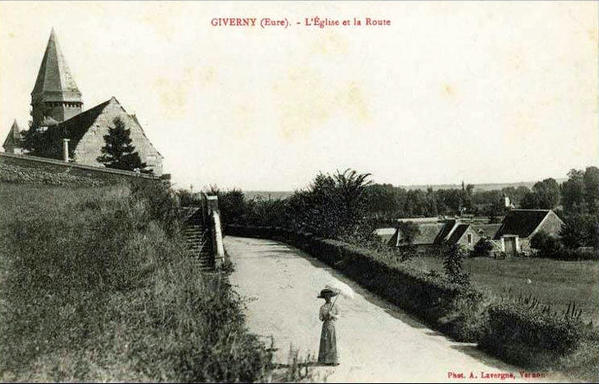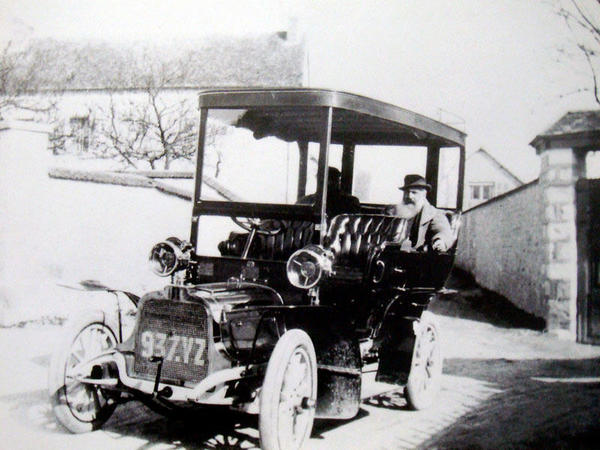When Claude Monet moved his family to the tiny just-barely-in-Normandy village of Giverny in 1883, no one could have predicted its future as a world-known tourism attraction that sees over half a million visitors a year. Here's a postcard from not long after...

 Monet in about 1908, waiting for his driver.
Monet in about 1908, waiting for his driver.
And while he had a steady stream of visitors—friends, admirers, painters and family—during the 43 years he lived there, the village didn't change that much until 1980, when Monet's gardens, house and studio were first opened to the public. When we first visited in the mid-90s, it even looked a little run-down.
But since then, with steady growth in the number of visitors, things look a bit tidier, as we see below.
Now, the visible Giverny, along Rue Claude Monet and a few side streets, is deceptively picturesque, with nearly every building in the core given over in one way or another to serving visitors food and beverages, crafts, souvenirs or overnight accommodations.
Considering that the annual visitors outnumber the population (which hasn't changed much in 200 years) by 1000-to-1, it keeps up a pretty good face, even when there's a long line waiting to visit Monet's estate, operated by the Fondation Claude Monet.
The other attraction in town is the Museum of Impressionism Giverny, originally founded to show the work of a group of American impressionists who settled and worked in the area in the late 19th century. It's a small but well-curated museum with interesting exhibitions. And (hot tip!) if you buy a combo ticket there for the museum and the gardens, you can skip that line waiting to get in. Just follow the little path below, and show your ticket.
Nearby, a statue of Monet stands on its beard, and in the courtyard of a village cafe, fluffy chickens draw everyone's attention.



Comments (1)